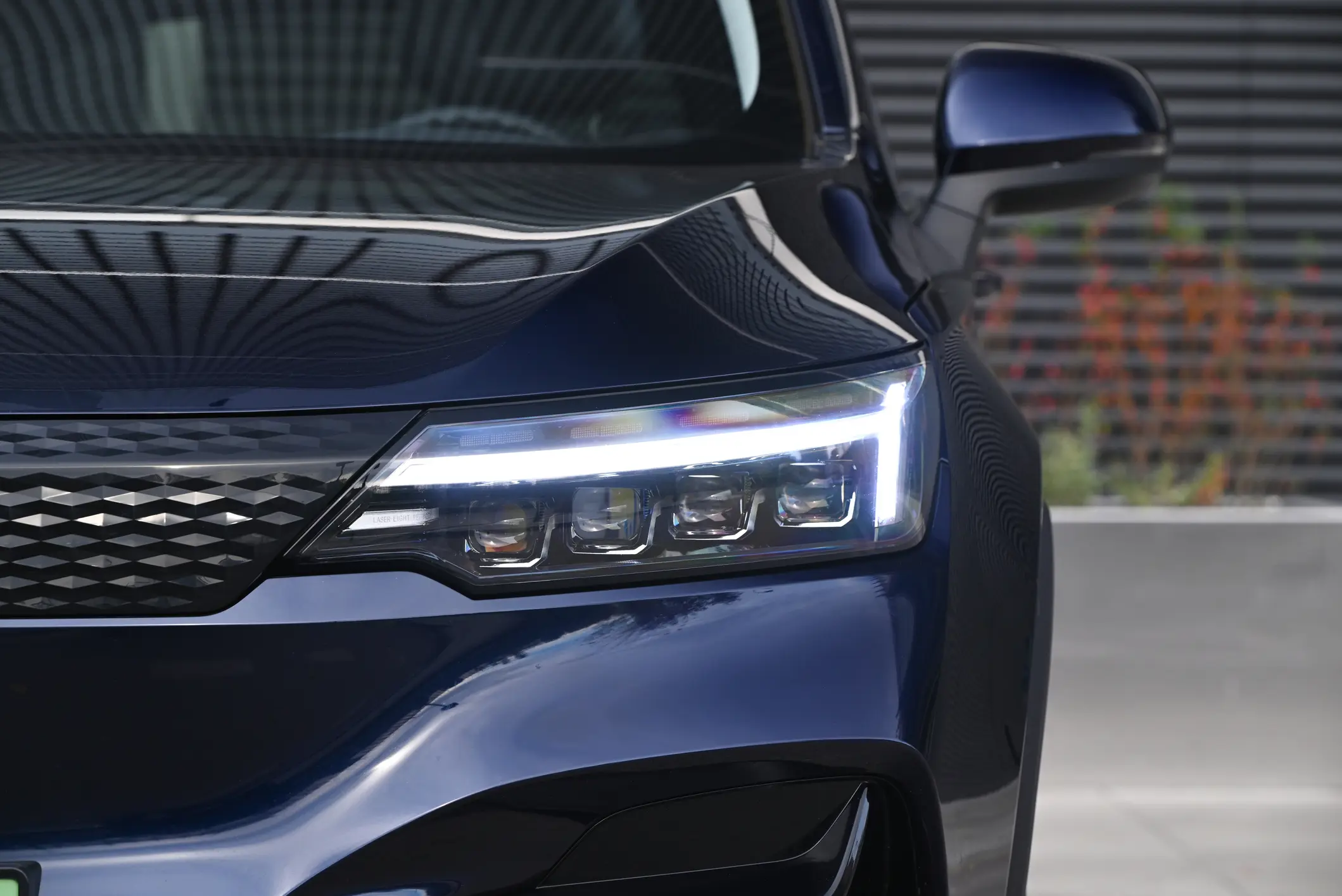What kind of lightbulb is in your EV?
Most EVs have LED lights. LED stands for “light-emitting diode.” Many lights these days – household lightbulbs, computer screens, Christmas lights – use LED technology. It uses a fraction of the power of incandescent lightbulbs and still gives off a brighter beam.
The history of gas in headlights
Did you know that the first headlights existed at the tail end of the 19th century? Most were open flames lit by acetylene. In 1904, these “headlights” were sealed in a lamp, but unfortunately, the unstable gas proved difficult to manufacture: an entire facility in downtown Indianapolis blew up.
A headlight without gas
Thankfully, the 1940s saw the invention of the sealed beam headlight. This is an airtight unit with a lens and mirrored inner surfaces that reflect the light created by the filament back onto the road. This technology allows the light to shine in the shape of a cone, with the widest part of the beam several metres in front of the vehicle.
Unfortunately, the energy required to light the bulbs and the dark stains left on the glass meant more inventions were needed.
Back to gas in headlights
Most newer model gas-powered cars may use halogen headlights – developed in the 1960s – or high-intensity discharge (HID) headlights – developed in 1991. Both light up the road similar to sealed beam headlights but need gases to work.
Halogen bulbs work with filaments, but the halogen gas inside makes the light much brighter. HIDs, by contrast, consist of electricity jumping between two electrodes surrounded by an inert gas, often xenon. The inert gas protects the electrodes and also glows, adding to the light output.
LEDs were introduced to the auto market with the Audi A8 earlier this century. They consist of tiny bulbs that are lit up when electrons pass through a semiconductor material. They are directional, meaning they shine light only in the direction they’re pointing in, unlike the other three types of bulbs we’ve just discussed.
Can I change the bulbs if I disable my EV?
We strongly recommend that you don’t change LED lights on your own. Yes, you can disable an EV by disconnecting the 12V battery and pulling the service plug or kill switch. This will make such a DIY project somewhat safer, but that still doesn’t mean it’s entirely safe. You need to be extremely familiar with the inner workings of your EV to switch out LED lights.
Furthermore, LED lights require a full headlamp replacement. Depending on your EV model, you may need to remove more parts than you think to reach the headlamp.
Some good news about LEDs and your EV
There is some good news, though. Unlike other types of headlights and taillights, LEDs usually last the life of your vehicle.
Which gives us another reason to recommend taking your vehicle to a shop for repairs: if an LED light has burned out and your car isn’t that old, you may want a technician to inspect the light assembly and wiring to ensure nothing else is wrong.
If you need to replace an LED headlight or taillight on your EV, visit your nearest NexDrive service centre. One of our auto technicians will be more than happy to help you!
